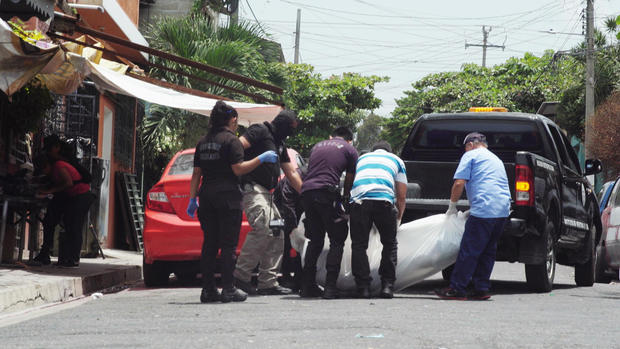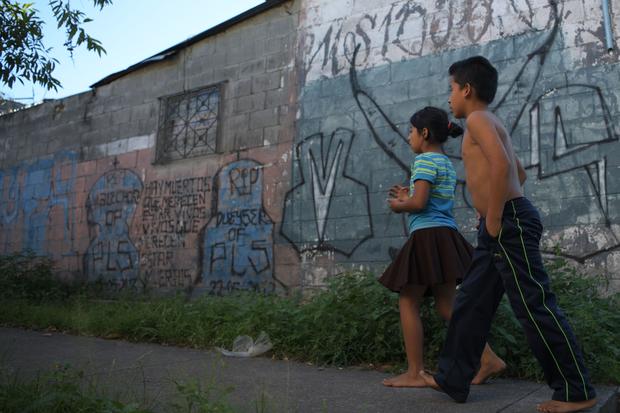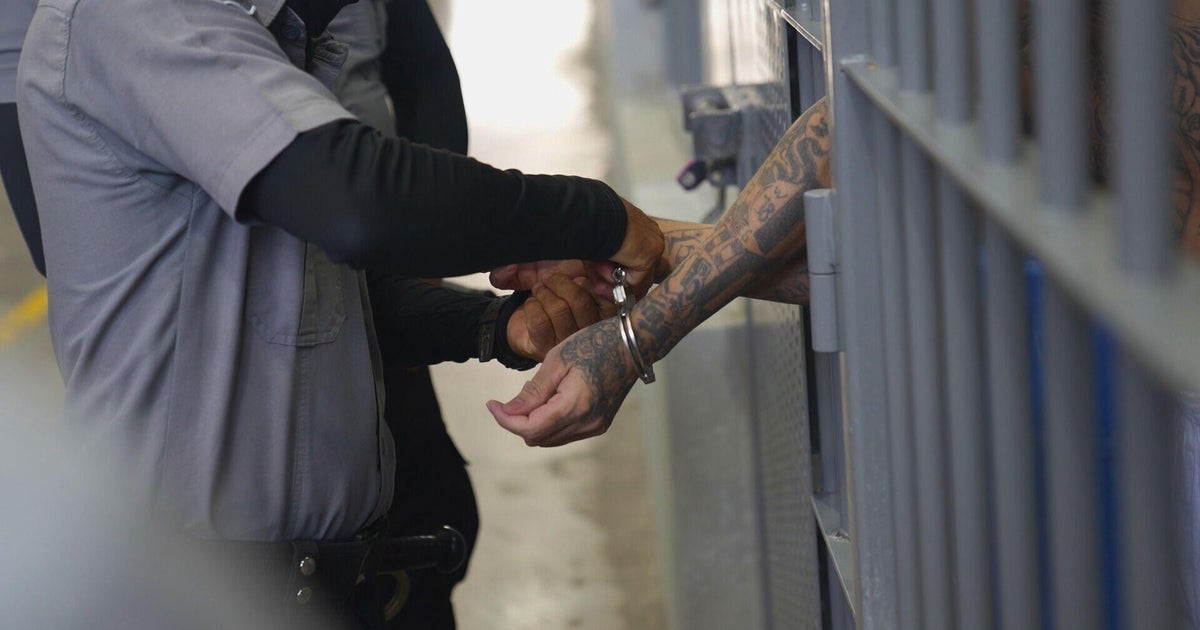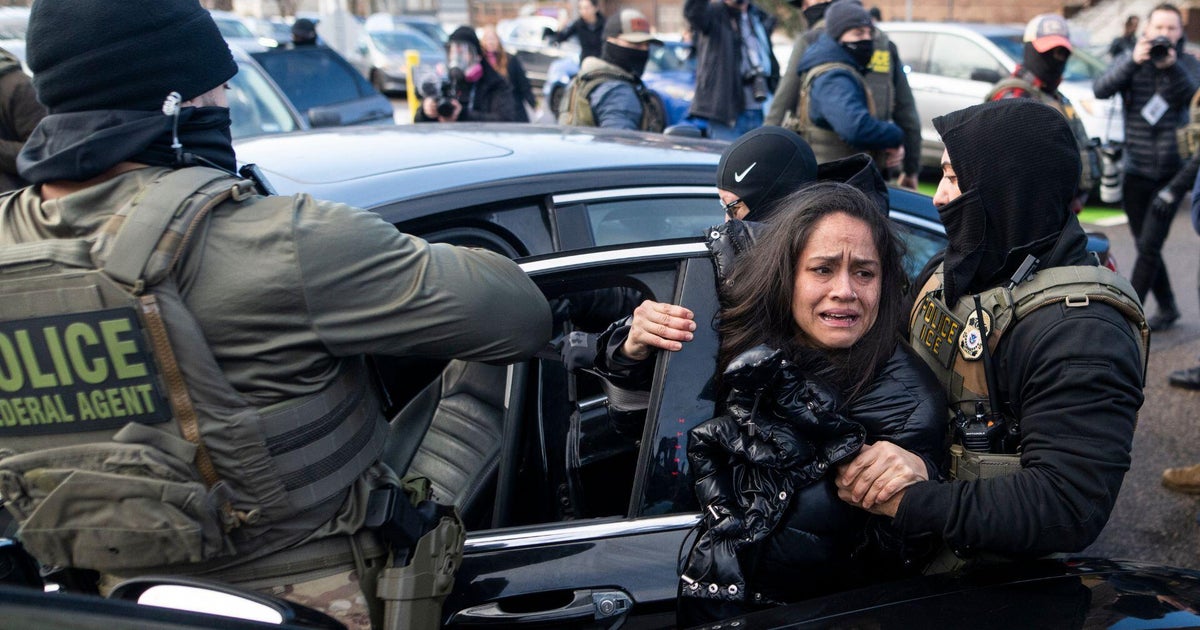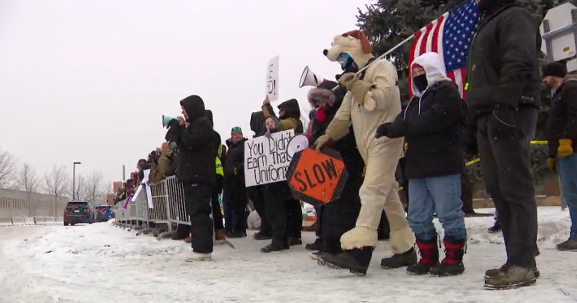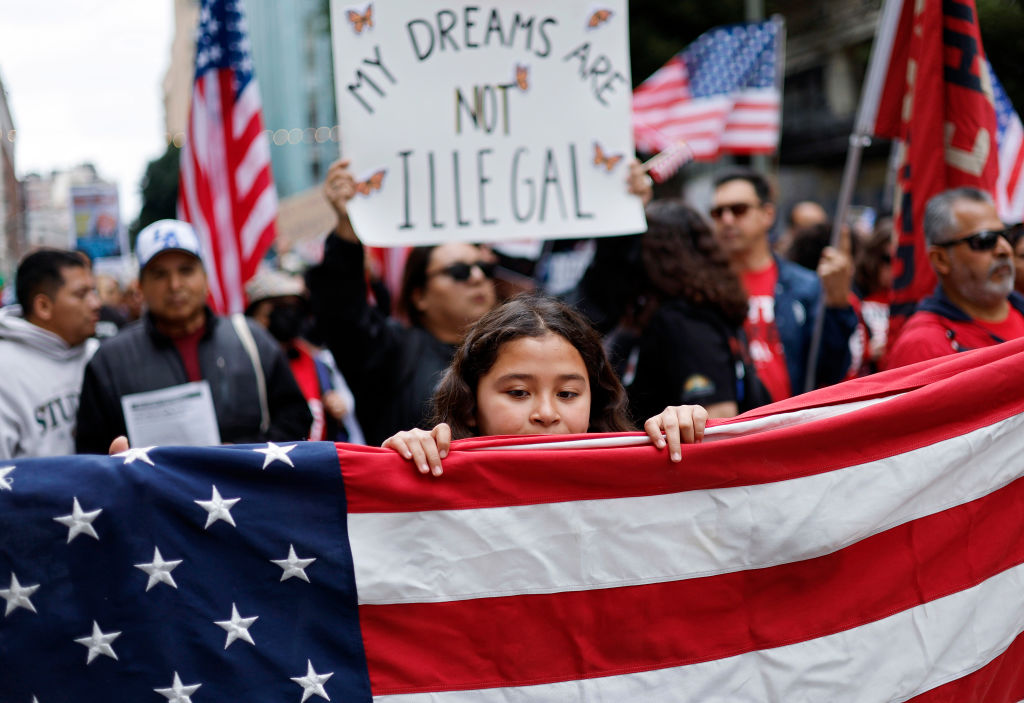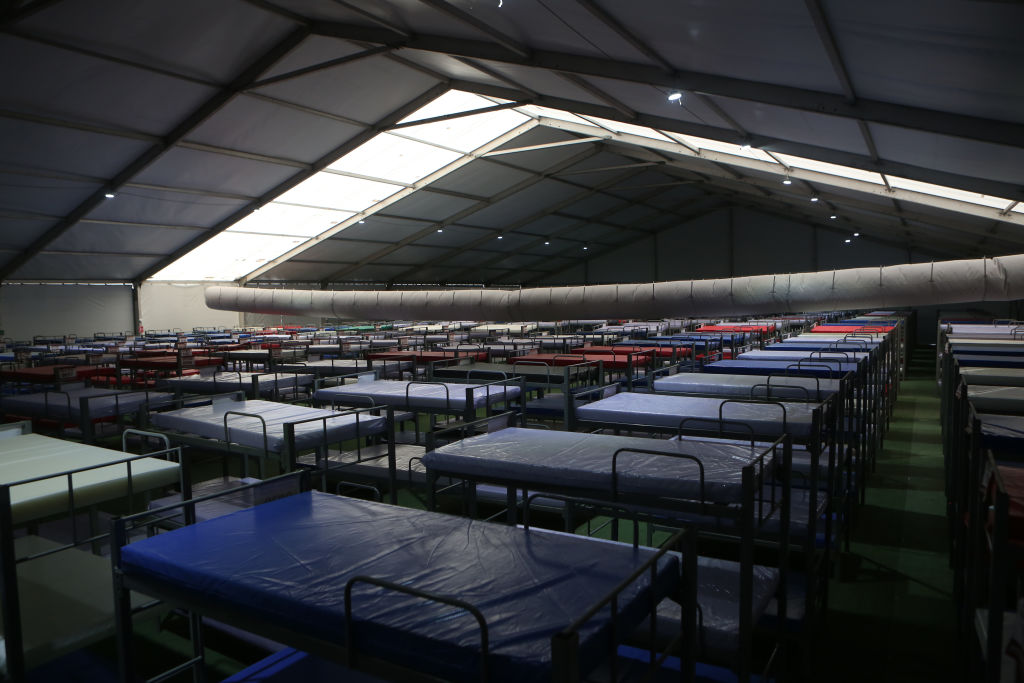MS-13 and the violence driving migration from Central America
Watch the new CBSN Originals documentary, "Families in Crisis: Illegal Immigration," in the video player above.
Its name has become a sinister shorthand for the fear of violence seeping across America's borders. MS-13, or "Mara Salvatrucha," is one of the largest gangs in the world, a menace in several countries and a frequent target of President Trump's rhetoric. Its violent grip in Central America is one of the forces driving thousands of migrants to flee for the U.S. — which, ironically, is where the gang got its start.
The Trump administration refers to MS-13 as "violent animals," and Mr. Trump often invokes MS-13's gruesome acts of violence to justify hardline policies against immigration.
"This is a crisis. You have human trafficking, you have drugs, you have criminals coming in, you have gangs, MS-13. We're taking them out by the thousands and bringing 'em back," the president said last week.
In recent months, migrants from the Northern Triangle — Guatemala, Honduras, and El Salvador — have headed to the U.S.'s southern border in much-publicized caravans to flee rampant violence and poverty. In 2017, there were close to 4,000 homicides in El Salvador, a nation of about 6 million people. Though that's down from over 6,600 killings in 2015, El Salvador still has one of the highest murder rates in the world.
"I got shot with a '38. I had like a fifty-cent-size hole on both of my sides," said Rafa Arturo, 45, an El Salvador native who spent much of his life in the U.S. before being deported. He was shot twice in 2016. He now lives in San Salvador with his 5-year-old son Jacob, who was born there. "It happened in front of my house, " he added.
Rafa was just a toddler when he came to the U.S. with his parents, settling in Los Angeles. But after a string of convictions, Rafa was deported in 2009, leaving behind four daughters. According to public records, he was convicted for three crimes involving theft from 1992 to 2001. He now works in a call center in San Salvador and worries about the rampant violence.
"What I'm truly afraid is that, we go out someplace … and then we get both shot," Rafa said. "The reason why I want to send Jacob to the States is because ... his safety. That's number one."
MS-13 and a rival gang, Barrio 18 or 18th Street, actively recruit members as young as 8 years old in El Salvador.
"You guys have been to a public school here, there's gang walls written already," Rafa said. "That's just the kindergarten school. By all means necessary, as a parent, I'll do whatever it takes to get my son to a next step."
Rafa tried to unite Jacob with his sisters in the U.S. but his visa was rejected multiple times. Out of options, Rafa is preparing to head to the border again, this time with Jacob — a dangerous journey to a country that will try to turn them back.
Where did MS-13 come from?
"We have people coming into the country, or trying to come in — and we're stopping a lot of them," President Trump said of MS-13 last May. "You wouldn't believe how bad these people are. These aren't people. These are animals." The following month, Homeland Security Secretary Kirstjen Nielsen said "large criminal organizations such as MS-13 have violated our borders and gained a deadly foothold within the United States."
But MS-13 isn't exactly a foreign invader — it originated in Los Angeles.
During El Salvador's Civil War in 1980s, the U.S. provided right-wing governments political, economic and military support against leftist guerrillas, while government forces were carrying out the bulk of human rights violations. As the government sent thousands to their deaths, civilians were indiscriminately targeted. Hundreds of thousands of Salvadorans fled as the war progressed, and many arrived to the U.S. undocumented.
Reagan-era immigration policies made it especially tough for Salvadorans to obtain asylum status or temporary legal status. Living in low-income neighborhoods, Salvadoran immigrants faced obstacles to landing steady employment and an education. Marginalized Salvadoran youth in LA neighborhoods joined gangs or formed their own.
"[Gangs] are really a social problem, and they attract young people who feel marginalized, who feel excluded from mainstream society," said Sonja Wolf, who researches street gang culture in Central America.
MS-13 initially began as MSS, a stoner gang made up of teenage immigrants who mostly smoked weed and listened to heavy metal music, according to anthropologist Thomas Ward. However, as more migrants arrived, MSS began to protect themselves from other gangs.
According to Ward, the group took a more malevolent turn when members in the LA County jail began adopting street gang subculture. It wasn't until the mid-1990s that the group became MS-13, as members began negotiating with the Mexican mafia for protection in jails and prisons from other Latino gangs.
The gang spread to other states when families moved for work. "Sometimes their children were affiliated with MS or had some kind of link," Ward said. "In order to fit in the new community, they would claim to be LA gangsters to get some clout and start up new cliques claiming MS."
This LA street gang became a problem for El Salvador after a change in U.S. immigration policy in 1996, when the U.S. increased the number of crimes that were subject to deportation. The U.S. also deported those with suspected gang links. El Salvador hardly had the infrastructure to handle the influx of returning migrants and dismantle criminal organizations, especially since it was still recovering from the war. Between 1998 and 2014, the U.S. deported over 81,000 migrants back to El Salvador.
Deportees reported prejudice against them when trying to find employment in El Salvador, according to Nestor Rodriguez, a sociology professor at the University of Texas at Austin. The Salvadoran press emphasized that planeloads of criminals were returning to the country. "They [deportees] would go to an employer, the employers would say roll up your sleeves. They would see tattoos and say if we need you, we'll call you," Rodriguez said.
Deportees returned to a society torn apart by war, a country they no longer had ties to. When Rafa returned to the country of his birth, he barely spoke Spanish and felt like an outsider. "Me and my son are an attraction, because I walk right here and talk to them in English," he told CBS News.
Meanwhile, the gang put down roots. El Salvador crafted policies to target gang members, but instead MS-13 grew more strategic and powerful, placing members in the police and military, even at the university where they studied law and accounting.
"The societal response was a gang repression, this iron first policy of trying to crack down," Ward said. "The gangs responded by becoming more organized and more rebellious, it created this cycle of violence that has perpetuated until some kind of new policy is instituted where they are not demonized."
Today, there are an estimated 10,000 active MS-13 gang members in local cliques in the U.S. and 50,000 across Central America.
The U.S. has a perspective that once these people are deported, "it's no longer our problem," according to Rodriguez. But he said, "This doesn't disappear. It's like a boomerang, and it's going to create more pressure for migration."
